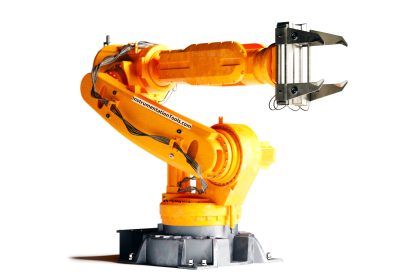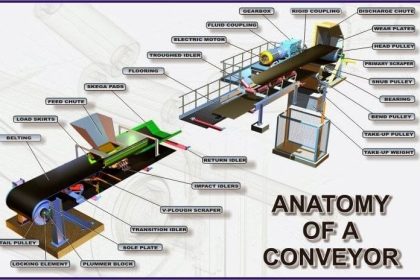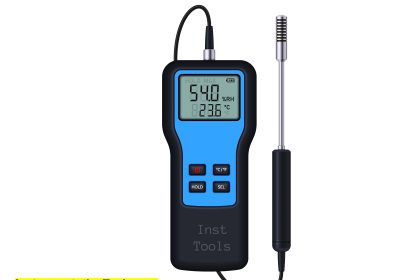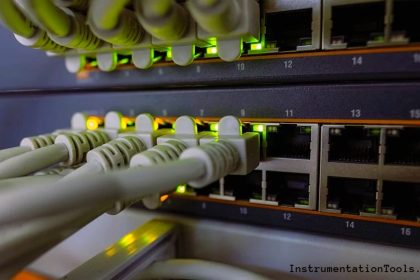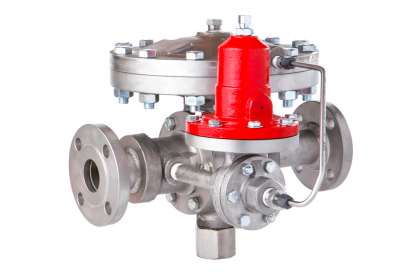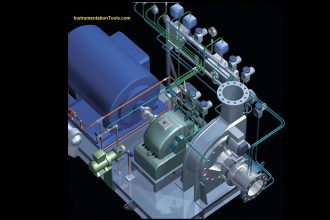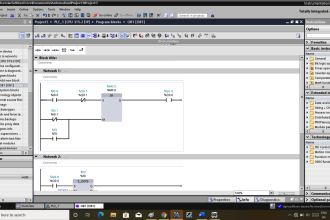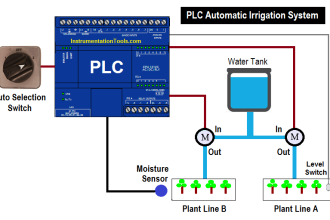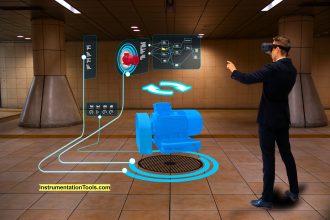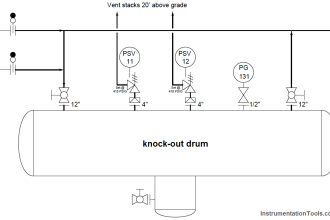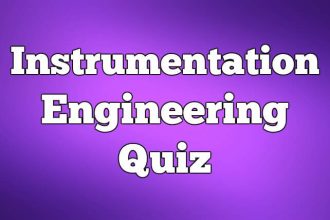The Internet of Things is changing how modern instruments work. Analysts expect 50 billion connected devices by 2030. Smart instruments now generate vital diagnostic data as they work and give immediate insights that weren’t possible before.
The economic effects are huge. IoT technology in retail alone should bring in $35 billion by 2030. Connected devices have changed maintenance and operations. Ethernet-connected instruments can send much more data than traditional 4-20mA systems, which means less wiring and lower costs.
Modern Instrumentation & IoT
- IoT-Enabled Smart Sensors – Real-time data collection and remote monitoring.
- Wireless Communication – Reduced wiring, improved flexibility in industrial setups.
- Cloud & Edge Computing – Faster processing and real-time analytics for better decision-making.
- AI & Machine Learning – Predictive maintenance and automated fault detection.
- Cybersecurity in IoT – Protecting industrial networks from data breaches.
- 5G & High-Speed Connectivity – Faster, more reliable data transmission for critical applications.
- Digital Twins – Virtual models for process optimization and predictive analysis.
- Energy-Efficient Systems – Lower power consumption and smart energy management.
- Blockchain for Data Integrity – Secure, tamper-proof instrumentation records.
- Seamless IT-OT Integration – Bridging industrial devices with business intelligence systems.
This piece looks at how IoT shapes modern instrumentation and its benefits. We’ll get into common integration challenges and their solutions. The future of smart instrumentation depends on emerging trends that we’ll explore together.

Current State of Industrial Internet
Process instrumentation has advanced from simple mechanical switches to complex digital systems. The industrial internet now connects these systems, improving efficiency and reducing production costs. Good apps and subscriptions at ggsel help simplify the workflow.
Development of instrumentation
Multiple domains like electrical, mechanical, IT, communications, and software have shaped modern instrumentation fundamentally. Smart sensors have become standard equipment and provide wireless connectivity, greater precision, and increased durability. The industrial internet connects machines and devices in manufacturing, transportation, oil and gas, and power generation sectors.
Key technological advances
Modern industrial systems now incorporate several groundbreaking technologies:
- Smart sensors that can self-diagnose problems and collect live data
- Cloud computing platforms that provide expandable data storage and processing
- Advanced analytics systems powered by artificial intelligence for predictive maintenance
The industrial internet helps organizations achieve better operational control through live collection and processing of operational data. These systems maintain product quality, ensure regulatory compliance, and improve operational efficiencies. Machine learning and live analytics integration has changed how manufacturers develop and produce products.
Benefits of Connected Instruments
IoT-connected instruments give manufacturers major operational benefits in industrial sectors. Companies using these technologies report better processes and higher profits.
Improved accuracy and efficiency
Smart sensors and automated data collection systems make measurements more precise. Manufacturers who use connected devices see higher productivity through better machine use. These systems collect data automatically and live, which eliminates human errors common in traditional paper-based methods.
Cost reduction opportunities
Connected instrumentation brings huge financial benefits. IoT-based systems can:
- Reduce maintenance costs by up to 40%
- Cut equipment downtime by up to 50%
- Extend machinery lifespan by 3-5%
- Lower overall operational expenses by 30%
Maintenance optimization
Predictive maintenance is a key advantage of connected instruments. These systems monitor equipment conditions non-stop and detect potential failures early. Maintenance teams can plan repairs at convenient times, which cuts down on expensive emergency fixes.
Real-time decision making
Live analytics play a crucial role in modern operations. Knowing how to monitor process parameters instantly lets teams make quick adjustments and corrections. Equipment operating outside acceptable thresholds triggers automatic alarms or machine shutdowns to prevent defective production.
Connected instruments make remote monitoring easier, which allows centralized control of multiple locations. Better visibility helps teams optimize resources and boost operational efficiency. Gartner’s research shows companies using these systems achieve 20% higher production efficiency and waste 10% less material.
Solving Common Integration Challenges
Modern instrumentation integration with existing infrastructure creates unique challenges for industrial organizations. Many facilities still depend on legacy equipment that’s older than current connectivity standards. Solutions exist to bridge this technological gap.
Legacy system compatibility
Companies struggle to connect their older systems with modern instruments. Data format incompatibility emerges as the biggest problem because legacy systems use outdated formats or proprietary standards. Notwithstanding that, modern IIoT technologies add automation and smart sensors without replacing entire IT systems.
Edge computing technologies work as bridges between old and new systems. Smart gateways can translate legacy protocols into IoT-compatible formats, which enables data extraction without extensive modernizing. These gateways normalize data and convert analog signals into digital values that automation systems can interpret.
Data standardization
Data standardization turns incoming information into a uniform format to ensure consistency in different platforms.
This process involves:
- Converting disparate data sources into a common model
- Mapping data tags through edge devices
- Storing standardized information in data warehouses or cloud systems
- Enabling up-to-the-minute data analysis and actionability
Standardization streamlines integration between systems and improves operational efficiency. This process helps organizations maintain compliance with data protection regulations while reducing manual data manipulation efforts.
Standardized data gives manufacturers the most accurate source of information on the shop floor. Manufacturers can predict product trends, identify field failures, and analyze quality issues better. Companies report improved capacity utilization and reduced maintenance costs through proper data standardization.
Future Trends in Smart Instrumentation
Smart instrumentation advances faster thanks to technological breakthroughs in artificial intelligence and connectivity solutions. A McKinsey report shows that things of the internet products and services will create between USD 5.50 trillion and USD 12.60 trillion in value by 2030.
AI and machine learning integration
AI has captured significant attention in instrumentation systems because of its impressive performance in measurement error estimation and compensation. AI makes predictive analytics and adaptive systems possible through next-generation networking. These systems can monitor, diagnose, and optimize their operation with minimal human interaction.
Emerging technologies
Several groundbreaking technologies have altered the map of smart instrumentation:
- Edge computing that brings processing closer to devices, reducing latency and enhancing privacy
- 5G networks providing ultra-low latency and high bandwidth connectivity
- Spatial computing enabling digitization of relationships between machines, people, and environments
The global sensor market will reach USD 250.00B by 2035. This is a big deal as it means that industrial robotics and collision detection sensors are becoming key market segments.
Industry predictions
Several industry trends are taking shape. Edge AI has become crucial for decentralized, on-device intelligence. Smart transportation networks backed by things of internet and 5G now integrate with autonomous vehicles and live traffic management systems.
Wearable sensors integrated into personal protective equipment show promise for workplace safety. Future industrial solutions will depend on an ecosystem of industrial intelligence that combines sensor data with applicable improvements. AI and things of internet devices’ synergy revolutionizes how users notice and interact with industrial systems.
Conclusion
IoT technology powers smart instrumentation and revolutionizes how businesses operate and maintain their equipment. The connected instruments deliver remarkable benefits. Companies report 40% lower maintenance costs and 50% less equipment downtime.
Modern solutions like edge computing and data standardization create effective pathways for integration, despite legacy system challenges. Organizations can bridge the gap between old and new technologies while their processes remain efficient.
AI and machine learning will become crucial components of smart instrumentation. The global sensor market shows promising growth potential. Experts predict it will exceed $250 billion by 2035. Smart transportation networks and workplace safety innovations show strong potential for widespread adoption.
IoT devices, AI-powered analytics, and standardized data systems shape the future of industrial operations. Companies that welcome these technologies now gain improved operational efficiency, lower costs, and better decision-making capabilities. Smart instrumentation evolves rapidly and provides advanced solutions for modern industrial challenges.


